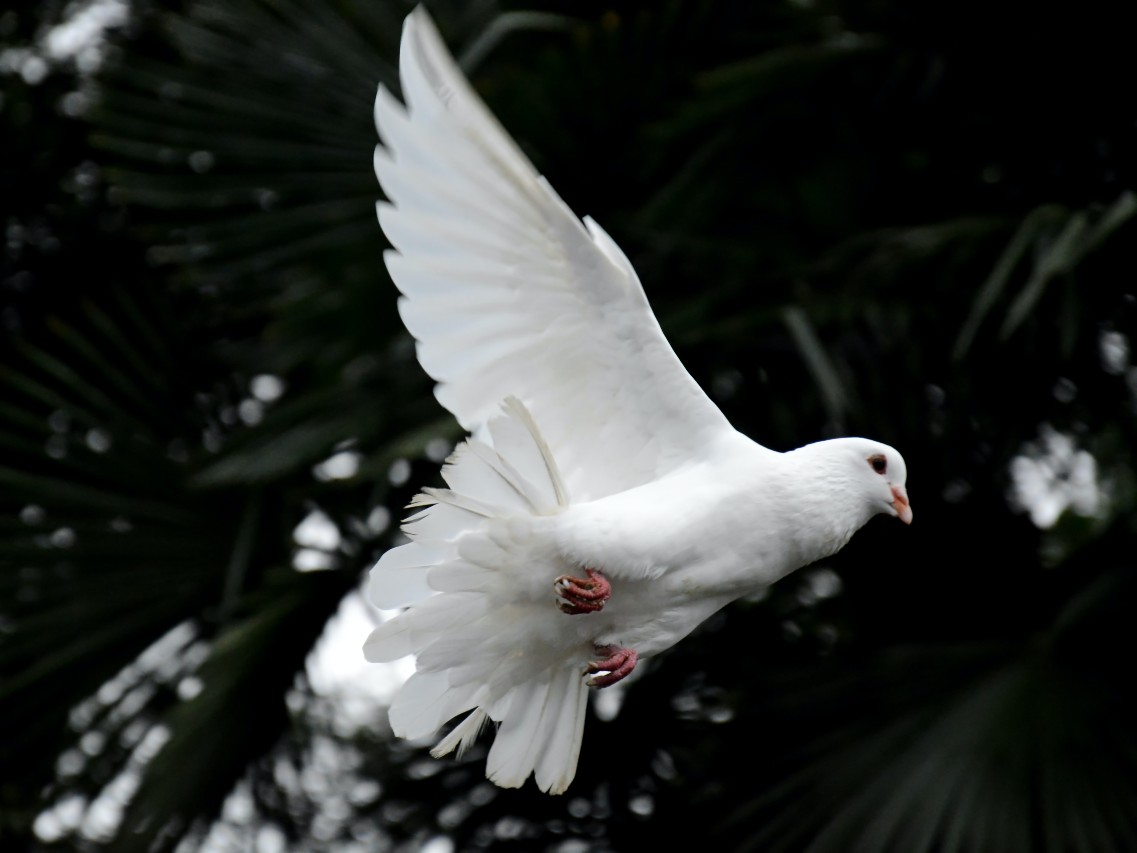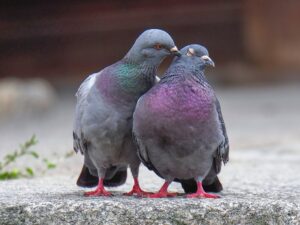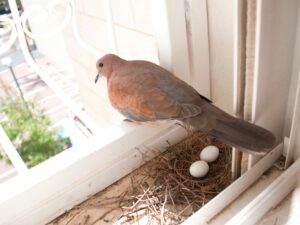All you need to know about the pigeon vs dove differences & similarities.
. Today, I’m delving into a topic that often stirs up a flurry of questions and confusion, especially among those new to the world of pigeons and doves. It’s the timeless question: what’s the difference between a pigeon and a dove?
Now, if you’re anything like me when I first started out, you may think of these two birds as completely separate entities.
But you might be surprised to learn that the lines between them aren’t as clear cut as you might think. This isn’t just about being able to identify which bird is cooing outside your window.
It’s also crucial for understanding their unique behaviors, care needs, and the roles they play in our environment and culture.
I’ve learned so much about these birds since I rescued Gerard, and now, I’m passionate about sharing this knowledge with others. So, buckle in, because we’re about to dive into the fascinating world of pigeons and doves!
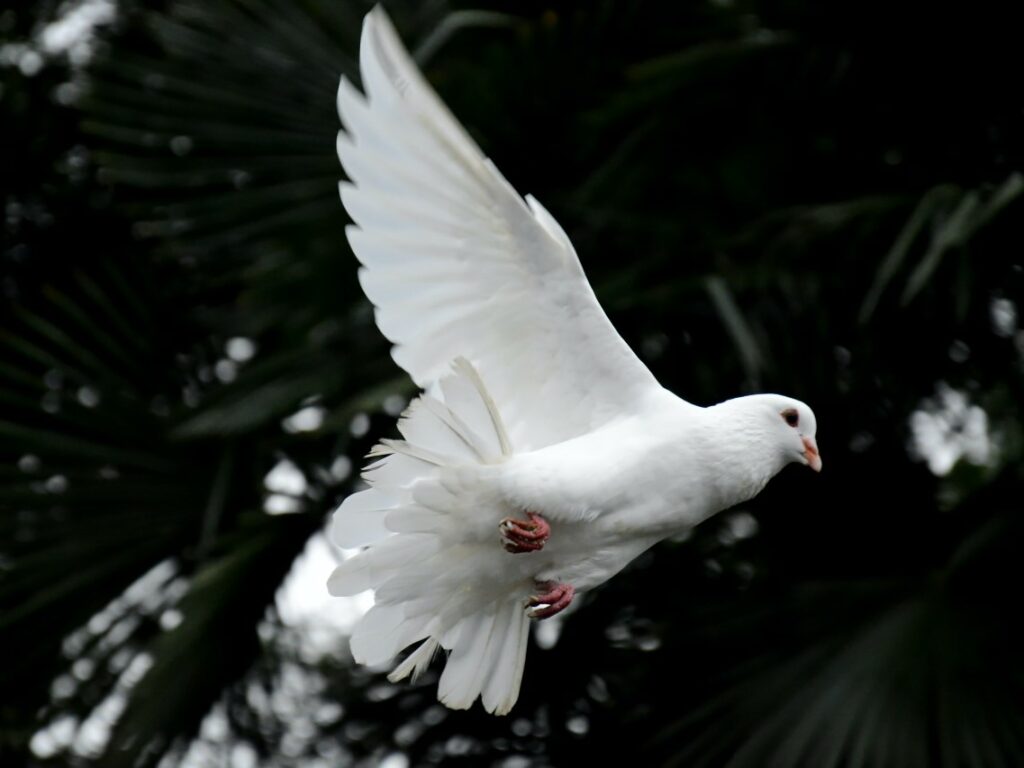
JUMP TO:
Pigeon vs dove – Overview
The exploration of pigeons and doves starts with a look at their general characteristics. These birds share a family—Columbidae—meaning they have more in common than you might initially think. Let’s break it down.
General Characteristics of Pigeons
Pigeons are familiar figures in many urban environments, and even in rural areas, around the globe. They’re adaptable and resilient, qualities that make them incredibly successful in a variety of habitats. Here are a few key features of pigeons:
- Size: Pigeons are generally larger than doves, with most species measuring anywhere from 9 to 15 inches long. Our domestic or feral rock pigeons, like my Gerard, can weigh up to 13 ounces!
- Color: Pigeons display a wide array of colors and patterns, with some featuring iridescent feathers around the neck area. The common rock pigeon, for example, often has a grayish-blue plumage, but due to selective breeding, you’ll find pigeons in virtually every color of the rainbow.
- Behavior: Pigeons are highly social birds, often seen in flocks. They’re also monogamous, with pairs tending to mate for life—just another reason to love these birds!
General Characteristics of Doves
Doves, while closely related to pigeons, have a few distinct traits of their own. Here’s a little about these lovely birds:
- Size: Doves are typically smaller than pigeons. Take the common mourning dove, for instance—it measures about 9 to 13 inches long and weighs around 4 to 6 ounces.
- Color: Doves are generally lighter colored than pigeons. They often have a soft, grayish-brown color, but of course, this can vary between species. The distinctive ring-necked dove, for example, features a beautiful white ring around its neck.
- Behavior: Like pigeons, doves are social creatures. They’re known for their gentle demeanor and the peaceful cooing sounds they make.
While these general characteristics provide a starting point, it’s worth noting that there’s a great deal of variety within both groups. The terms “pigeon” and “dove” are often used interchangeably, and what one person calls a dove, another might call a pigeon. That’s part of the beauty and complexity of these birds!
Physical differences between pigeons and doves
Sure, let’s delve a bit deeper into the physical differences between pigeons and doves.
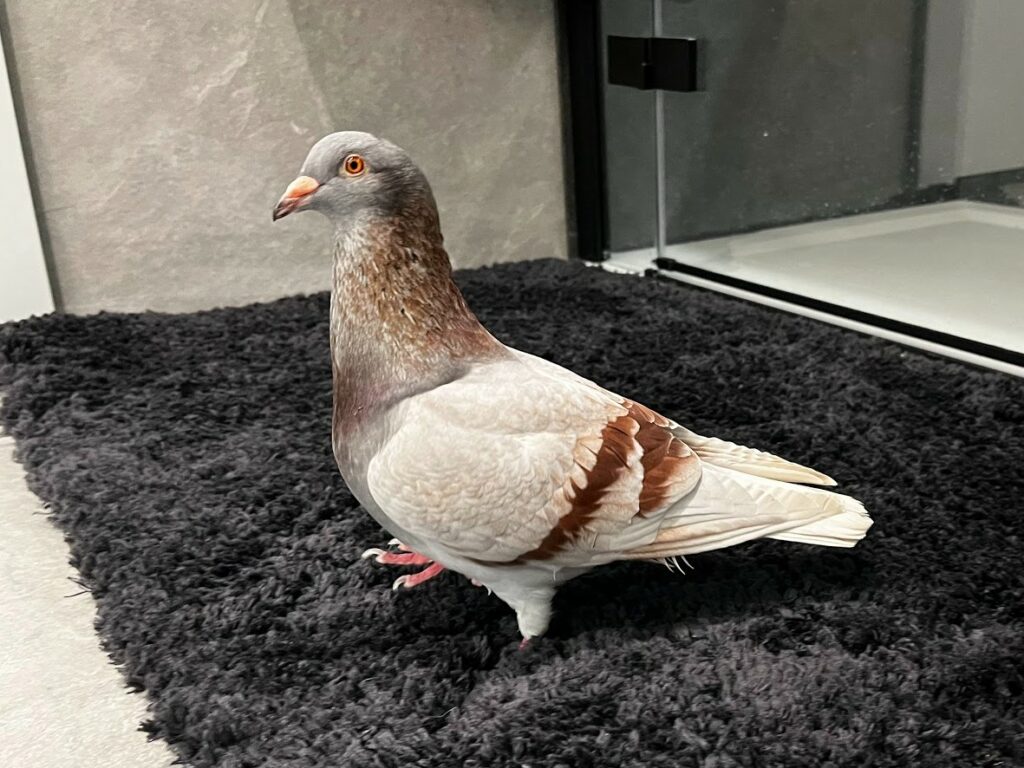
Size and Coloration
Size and coloration are two notable distinctions between pigeons and doves, although there is significant variation among species within each category.
- Pigeons: As previously mentioned, pigeons are generally larger than doves. Domestic pigeons, like my Gerard, can range from 11 to 15 inches in length and weigh up to 13 ounces. In terms of coloration, pigeons present a broader palette, with varieties from the classic gray-blue to white, and even multicolored or iridescent feathers.
- Doves: Doves are usually smaller, averaging 9 to 13 inches in length, and weigh less—typically between 4 to 6 ounces. When it comes to color, doves are often associated with lighter, softer hues, with many species exhibiting various shades of gray and brown, and occasionally white.
Body Shape and Other Morphological Differences
Looking beyond size and color, there are additional morphological differences that can help distinguish pigeons from doves.
- Pigeons: Pigeons have robust bodies with broad, strong wings. They have relatively short legs, and their necks can seem short when retracted. One characteristic feature of many pigeons is the iridescent patch of feathers often found on the neck and chest, which can reflect a spectrum of colors.
- Doves: Doves generally have a more slender body and a rounder, smaller head compared to pigeons. They also tend to have long, pointed tails—a feature that is particularly prominent in species like the mourning dove.
However, keep in mind these are general trends and there can be quite a bit of overlap between the two. There are many species within the pigeon-dove family, each with their unique characteristics and charm!
Behavioral Differences Between Pigeons and Doves
Let’s explore some of the key behavioral differences between pigeons and doves:
Communication and Social Behavior
Both pigeons and doves are known for their unique social behaviors and communication methods, but there are certain distinctions to be noted.
- Pigeons: Pigeons are highly social creatures, often seen in flocks in both urban and wild environments. They communicate through a range of vocalizations and body languages. For instance, Gerard often coos and even dances to express his contentment. They are also known for their remarkable homing instincts, allowing them to navigate back to their nests from great distances.
- Doves: Doves are also social, but they are generally more quiet and tranquil. Their cooing sounds are typically softer and more monotonous compared to the diverse vocal repertoire of pigeons. Some doves species are quite shy, preferring quieter habitats away from urban hustle and bustle.

Nesting and Mating Habits
The nesting and mating habits of pigeons and doves show interesting differences as well.
- Pigeons: Pigeons tend to be monogamous, staying with the same partner for life. Both parents share responsibilities in nest building, incubating the eggs, and feeding the young. Pigeons are known for their unique ability to produce ‘crop milk’ to feed their babies, just like my Gerard did when he was a squab.
- Doves: Similar to pigeons, most doves are monogamous. However, in some species, only the male dove takes part in nest building. Doves also produce ‘crop milk’ for their offspring. Their nests are usually quite simple and frail-looking, often built in trees or shrubs.
Again, it’s important to keep in mind that the pigeon-dove family is vast, and behaviors can vary greatly from species to species.
Diet Differences Between Pigeons and Doves
Let’s dive into the dietary differences between pigeons and doves:
Typical Diet of Pigeons
Pigeons are largely granivorous, meaning their primary food source consists of seeds and grains. They are, however, opportunistic feeders, especially in urban environments. They will readily consume food scraps provided by humans, including bread, rice, and other leftovers.
In my experience with Gerard, I’ve learned that it’s essential to provide a balanced diet to captive pigeons, usually consisting of a variety of seeds, legumes, and grains, supplemented occasionally with fresh, chopped vegetables and grit for digestion.
Check my article on what pigeons eat and what baby pigeons eat.
Typical Diet of Doves
The diet of doves is similar to that of pigeons as they are also primarily granivores. They consume a variety of seeds, grains, and occasionally, small fruits and insects. Wild doves often forage on the ground for seeds, spending a considerable part of their day feeding.
For those keeping doves as pets, a seed mix designed specifically for doves, supplemented with occasional fresh greens, would be an appropriate diet. Providing grit is also crucial for doves, as it aids in their digestion process.
Keep in mind that specific dietary requirements can vary between different species and subspecies of both pigeons and doves. Always consult with a bird or avian veterinarian to ensure you are providing the best possible diet for your feathered friend.
Check these:
Habitats of Pigeons and Doves
Let’s delve into the typical habitats of these birds.
Typical Habitats of Pigeon
Pigeons are incredibly versatile and adaptable when it comes to their habitats. They’re found all over the world, except in extreme climates. From the bustling cityscapes of New York to quiet countryside villages, pigeons make their homes wherever they can find food and shelter.
In urban areas, you’ll often see them nesting on window ledges, rooftops, or other man-made structures. This adaptability is one reason why pigeons are so widely distributed across the globe.
On a personal note, Gerard, my rescued pigeon, has adapted beautifully to indoor living. With the proper care, pigeons can thrive as indoor pets, although they should always have access to some form of safe outdoor time for sunshine and exercise.
Typical Habitats of Doves
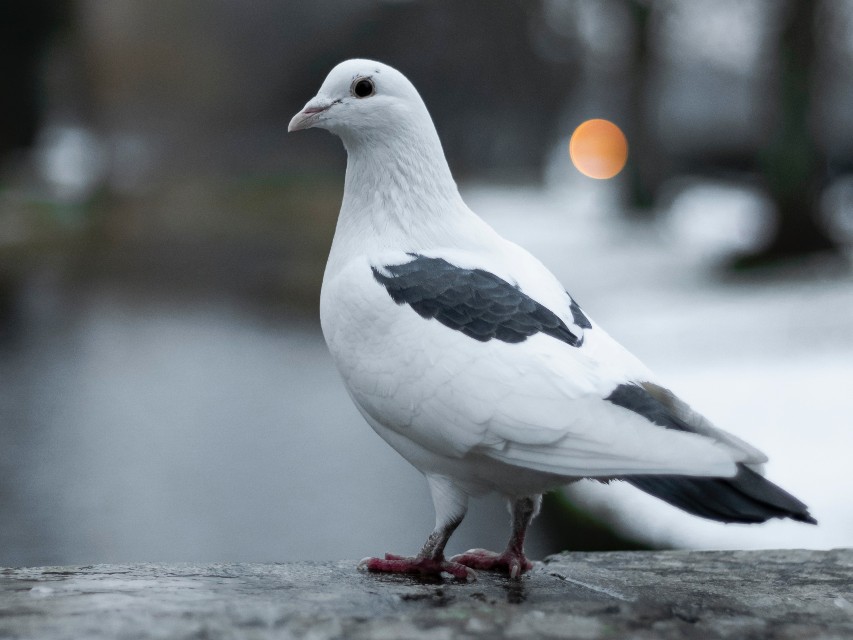
Similar to pigeons, doves are adaptable and can be found in diverse habitats worldwide. This includes woodlands, forests, deserts, grasslands, and even urban settings. While they tend to prefer slightly quieter environments compared to pigeons, doves have still managed to successfully establish themselves in towns and cities.
Some species of doves, like the Mourning Dove in North America, are quite common in suburban settings and farmlands. They can be seen perched on telephone wires or foraging for seeds on the ground.
Whether it’s a pigeon or a dove, both birds have demonstrated remarkable resilience in the face of changing environments, further emphasizing their adaptability and resourcefulness.
Pigeons and Doves in Human Culture
Let’s explore the cultural significance of these birds.
Pigeons in Symbolism and Culture
Pigeons carry various symbolic connotations across different cultures. In ancient times, they were associated with goddesses of love and fertility due to their prolific breeding. The Greeks and Romans viewed them as sacred to Aphrodite and Venus, respectively, the goddesses of love.
In a contemporary context, pigeons often symbolize peace, especially the white domestic pigeon. They’re also seen as emblems of resilience and adaptability due to their worldwide presence and ability to thrive in various environments. Despite these positive attributes, they’ve earned a somewhat mixed reputation in urban settings where some see them as pests.
On a personal note, my own pigeon, Gerard, has become a symbol of companionship and joy for me. He’s provided countless hours of fascination with his curious nature and intelligence.
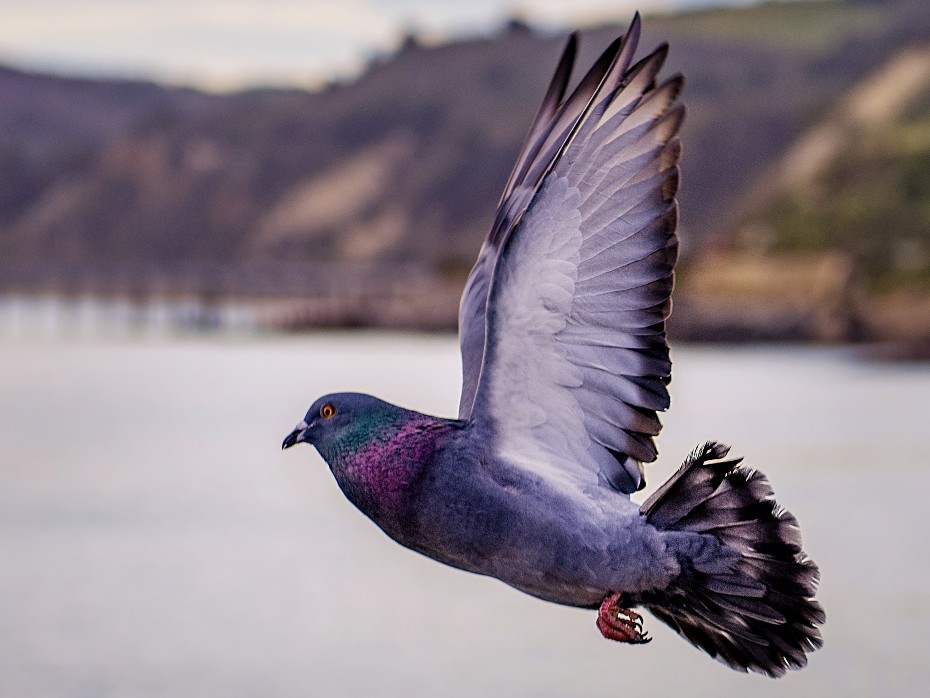
Doves in Symbolism and Culture
Doves are universally recognized as symbols of peace and purity. This largely stems from religious contexts where they often appear. In Christian symbolism, the dove often represents the Holy Spirit. In Judaism, a dove carrying an olive branch is a symbol of hope, as in the story of Noah’s Ark.
Additionally, doves are also associated with love and devotion. This is because many species of doves mate for life and share the responsibilities of parenting, giving them a strong association with familial unity.
Both pigeons and doves, with their rich symbolic meanings and diverse roles in human culture, are birds that command respect and intrigue. They have not only adapted to live alongside us but also woven themselves into our mythologies, art, and literature.
Also check:
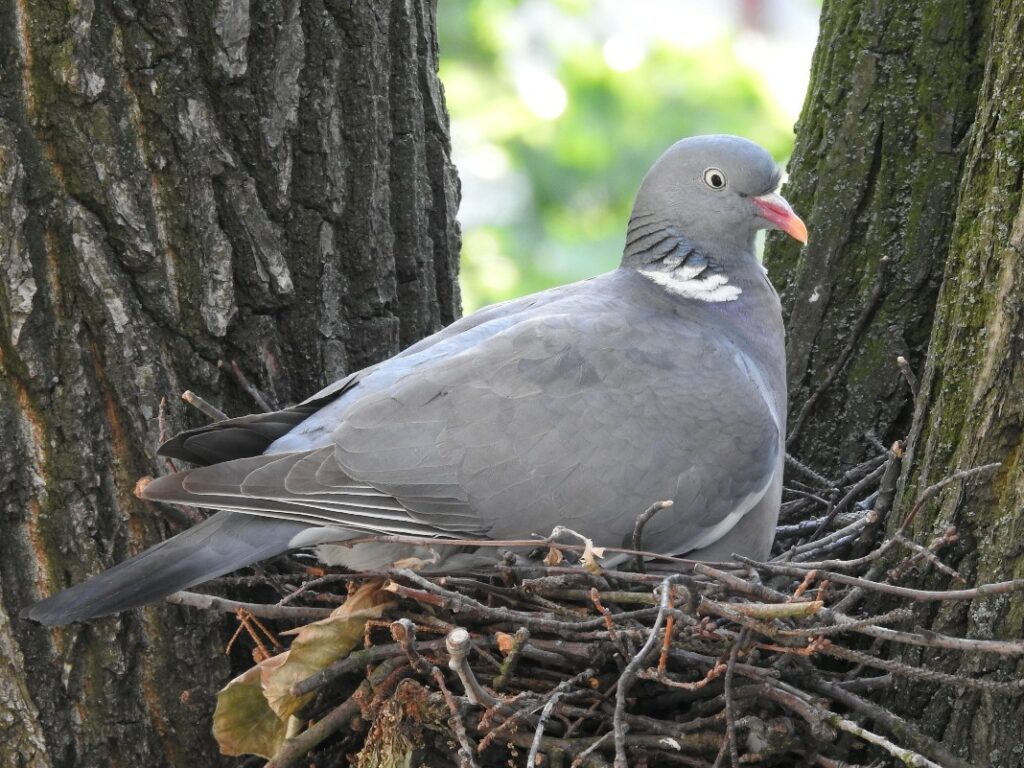
Pigeon vs dove – Final thoughts
In summary, while pigeons and doves are closely related and have much in common, they also possess unique characteristics that set them apart. These differences and similarities have shaped how we view and interact with these birds, contributing to their place in our cultures, our cities, and our hearts.
As a pigeon owner myself, I can testify to the unique charm these birds have. They’re intelligent, adaptable, and carry a surprising depth of personality. Whether you’re observing them in the wild, the city, or in your own home, there’s always something new to learn about these fascinating birds.
Pigeon vs Dove – Frequently Asked Questions
Here are the most often-asked questions about the differences between pigeons and doves.
Do pigeons and doves have the same lifespan?
The lifespan can vary depending on species, diet, predators, and environment. On average, both pigeons and doves can live between 10 to 15 years in the wild, and potentially longer in captivity.
Are there color differences between pigeons and doves?
There can be, but it’s not a rule. Both pigeons and doves exhibit a wide variety of colors and patterns, depending on their specific species.
Is there a difference in the flight pattern of pigeons and doves?
Both pigeons and doves have similar flight patterns characterized by powerful, direct flight. However, individual species may exhibit unique traits.
Do pigeons and doves have the same predators?
Pigeons and doves share many common predators, including cats, snakes, hawks, and humans. However, specific threats can vary based on their geographical location and specific habitat.
What makes a pigeon a dove, and a dove a pigeon?
As both terms refer to the same family of birds, Columbidae, the distinction often comes down to size and regional usage of language. Generally, larger species are referred to as pigeons and smaller ones as doves.
But are pigeons doves, or are doves just fancy pigeons?
Pigeons and doves both belong to the same family of birds, Columbidae, and are often used interchangeably. The distinction generally comes down to regional vernacular and species size—smaller species are often referred to as doves, and larger species as pigeons.
Why are doves called doves and pigeons called pigeons if they are the same thing?
The terms “dove” and “pigeon” are often determined by cultural, linguistic, and regional differences rather than biological taxonomy. These names have been used differently in various parts of the world and have stuck over time.
What bird looks like a pigeon and a dove?
Since pigeons and doves belong to the same family, they share many characteristics. They are generally plump birds with short legs, and they both have a rapid flight with the regular beats and an occasional sharp flick of the wings which are characteristic of pigeons in general.
What is the difference between a dove, a pigeon, and a squab?
Doves and pigeons are members of the same bird family. A squab, on the other hand, refers to a young pigeon that is not yet fully grown.
What’s the actual scientific difference between the birds we call ‘doves’ and those we label ‘pigeons’?
Scientifically, there isn’t a clear distinction between “doves” and “pigeons”. Both fall under the Columbidae family and can be referred to interchangeably. Any differences, such as size or color, are often species-specific rather than a distinction between doves and pigeons.
Which family do doves and pigeons belong to?
Scientifically, there isn’t a clear distinction between “doves” and “pigeons”. Both fall under the Columbidae family and can be referred to interchangeably. Any differences, such as size or color, are often species-specific rather than a distinction between doves and pigeons.
Are doves and pigeons the same species?
Doves and pigeons are not the same species, but they do belong to the same family, Columbidae. There are hundreds of species within this family.
Were pigeons or doves the first carrier birds?
It’s not precisely known whether pigeons or doves were the first carrier birds. However, pigeons have been widely used throughout history for their homing abilities, suggesting that they were likely the first.
What is the difference between a rock dove and other types of pigeons or doves?
Rock doves, also known as rock pigeons, are a specific species of pigeon. They are generally larger and have a distinct grey-blue color compared to other types of pigeons or doves.
Have you ever seen some dove birds in public parks and pet stores?
Yes, it’s common to see doves and pigeons in public parks and pet stores. They adapt well to urban environments and are popular as pets due to their calm nature.
Have you ever seen some dove birds in public parks and pet stores?
Yes, it’s common to see doves and pigeons in public parks and pet stores. They adapt well to urban environments and are popular as pets due to their calm nature.
So are pigeons doves?
In a sense, yes. The terms “pigeon” and “dove” are often used interchangeably, and they both belong to the same family of birds, Columbidae.
Can doves and pigeons mate?
Yes, closely related species of doves and pigeons can interbreed.
Are doves white pigeons?
Not all doves are white, and not all white pigeons are doves. However, the white birds often released at weddings or other ceremonies are usually a species of rock dove.
What is the difference between a stock dove and a wood pigeon?
Stock doves and wood pigeons are two different species

